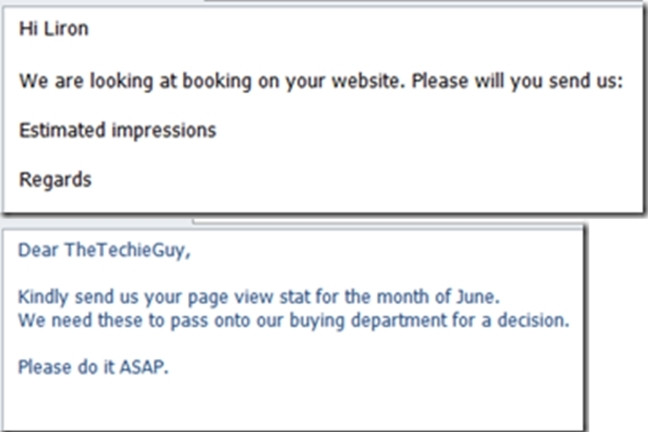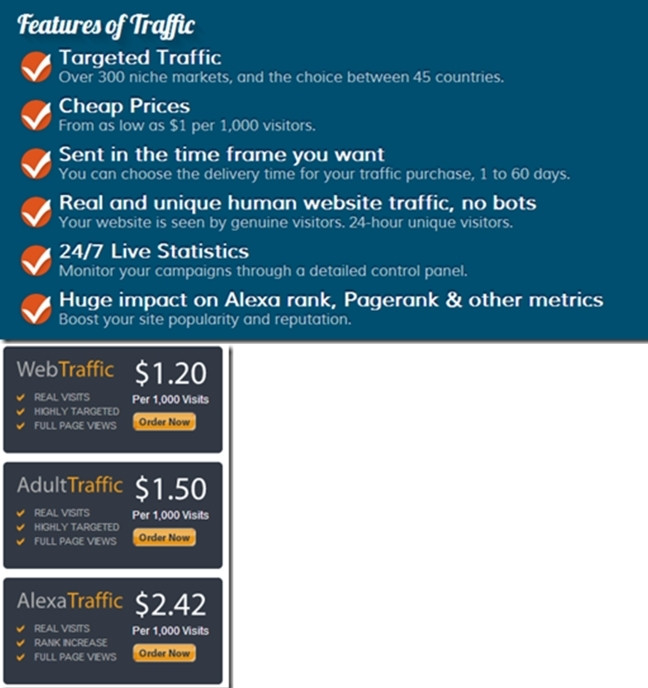As a blogger, I don't earn revenue from the blog. I do it because I enjoy it and it keeps me at the cutting edge of technology. I do it because I like to tell the story of technology in a way people seem to relate to.
As the blog grows, so do the running costs, which are paid for in real rands and cents, not via "check my latest review phone" revenue.
So, like everyone else, I looked to earn some money by selling advertising banners. What I discovered was that people buying advertising space are obsessed with two words - "page-view stats".
Content Web site owners, also known as publishers, are frequently asked about their stats: "How many visitors do you get?" or "How many page-views do you have?" What is really being asked is: "Can you quantify how many people are seeing your content?"

This should be easy to answer. Tools like Google Analytics provide all this information with a simple click.
I put it to you that page-views are the absolute wrong stats to be monitoring.
Here is why:
The popular market view is that a Web site with a large number of views is seen as more successful or more valuable than a site that has fewer views. This view has merit when you are reviewing your own company's Web site. You use page-views to compare how many pages were viewed this month compared to last month, compared to your competitor, so you can benchmark your performance verses something else. However, in a publisher/content world, this is a flawed view.
Publishers argue that due to great content, people keep coming back to read the wonderfully crafted articles. However, a major study conducted by Chartbeat, a data analysis company, analysed deep user behaviour across 2 billion visits on the Web over the course of a month, and found that 55% spent fewer than 15 seconds actively on a page.
In other words, 1 billion page-views were useless. That is 1 billion page-views worth of ad impressions that were wasted; 1 billion pieces of so-called good content that were not read for more than 15 seconds.
Therefore, I ask, why would we measure success or the value of a site based on these 15 seconds of non-reading. Surely, a site that has fewer page-views but more content being read is more valuable to a brand?
When I ask companies which would they rather have: more 15-second page-views or more content being read on a site, the answer is an overwhelming "more readers". Yet, ads are being bought based on 15-second page-views.
Perhaps we should we be using another benchmarking measuring tool to measure and rate the value of a site?
Brands and marketers are starting to ask the same question. And those that are not should be.
Those sites that generate revenue from ads would argue that more page-views are an indication of the site's popularity, due to its content. However, they have a vested interest in keeping the "page-view is king" myth alive, as this view supports their business model of generating income based on the number of pages showed. The more pages, the more ad impressions there are for brands to buy, which results in more money being generated for the site owner.
This is why we often see sites that split one story over many pages, as each page is an ad opportunity. We see slideshows that require the clicking of the 'next' button, and childish headlines like: "You gotta see this - number three is not even possible" - all to encourage "the click".

The less scrupulous site owners will turn to simply buying clicks and page-view services that are littered all over the Web. For $9.99 you can buy 10 000 impressions and even specify the originating country of the clicks to make your stats look impressive.
All these tricks increase the total number of page-views and look great on a proposal, but in reality offer very little value to the brand advertising. No one wants to pay R500 for 1 000 views of an ad that is shown to a computer-generated script or to people being paid to click on links with no interest in the brand at all.

If page-views are not the instrument of measurement - what is?
I equate page-views to hundreds of people making prank phone calls to a company, and 15 seconds later, hanging up; then calling again and hanging up again after 15 seconds. No company will look at their incoming telephone report and boast about their amazing customers.
Engagement is the equivalent of someone calling a company and spending time on the phone talking to the sales person. It might not be high volume and might not translate into a sale - but the real opportunity is there.
A site's success benchmark should be around engagement. Engagement can be measured based on several real, logical factors, such as legitimate comments an article receives; the number of "contact me" forms being completed; the number of people that read the content and find enough value to share that content with their followers. These are all indicators of a good, engaged audience.
However, the most telling statistic that should be measured is the amount of time spent reading the content. Readers who spend more than 15 seconds on the page demonstrate the site has their attention. The site has given them a reason to stay. The site has great content.
So in summary:
Stop asking for page-views and start asking for engaged time.
The move towards time engagement as a measuring tool makes logical sense to everyone. It makes sense to the publisher, which is encouraged to produce better and more engaging content so the reader stays on the site for longer. It makes sense to the advertiser, as the right eyes view the ads with the best chance of meaningful interaction. It also makes sense to the reader, as the site continues to generate content that is meaningful and worth revisiting.
The only ones that object to time engagement measurements are the site owners that prioritise page-views over meaningful content. So, are these sites really valuable? I think not.
Share